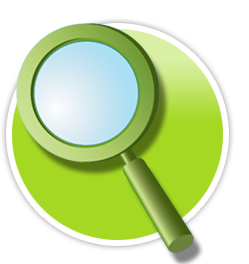Alterations in upper limb motor function in hemiplegia
Alteraciones de la función motora de miembro superior en la hemiplejía physiotherapy intervention models
Main Article Content
Hemiplegia generally occurs as a consequence of cerebrovascular diseases and craniocerebral trauma whose motor deficiency is characterized by involvement of the hemibody contralateral to the site of injury, which can be accompanied by sensory, mental, perceptual and language alterations. In hemiplegia, it is common to find impairment of the function of the upper extremities, leading not only to difficulty in carrying out selective and basic movement patterns, but also to the functional component, both individual and bilateral, especially for manual function. Rodríguez, Pastro, Werner, Theis, Levis, Noconecy de Souza (2005) and although the recovery potential is not clear, there are intervention methods used that can reduce the levels of disability and dependency as a consequence of upper extremity dysfunctions.
Downloads
Publication Facts
Reviewer profiles N/A
Author statements
Indexed in
-
—
- Academic society
- N/A
- Publisher
- Bogotá: Corporación Universitaria Iberoamericana
Article Details
Ada L., Goddard E., McCully J., Stavrinos T., Bamptom J. (2005) Thirty minutes of Positioning Reduces the Development of Shoulder External Rotation Contracture After Stroke: a Randomized Controlled Trial. Arch Phys Med Rehabil. 86:230-4.
Bobath B.(1990) Hemiplejía del adulto. Evaluación y tratamiento Berta Bobath, Diana S Klajn. Barcelona: Editorial Médica Panamericana.
Bohmanm I. (1997). Three week course. Adult with Hemiplegia and TBI. Cuernava México. Documento sin editar.
Cailliet R. (1989). El Hombro en la Hemiplejía. México: Editorial el Manual Moderno.
Carr J. Shepherd R. (2004) Rehabilitación de pacientes en el Ictus. Pautas de ejercicios y entrenamientos para optimizar las habilidades motoras. Madrid. Elsevier.
Carr JH, Shepherd RB (2006). The Changing Face Of Neurological Rehabilitation Rev. bras. Fisioter. 10(2) 147-156.
Carr, J. Shepherd RB. (1998). Neurological Rehabilitation. Optimizing Motor Performance. Oxford: Butterworth-Heinemann.
Ching-LJN Hsieh, I-Ping Hsueh, Fu-Mei Chiang, Po-Hsin LJN. (1998) Inter-rater reliability and validity of the Action Research arm test in stroke patients. Age and Ageing; 27(107);1 I 3.
Davies P. (1990) Right in the Middle: Selective Trunk activity in the Treatment of Adult Hemiplegia. Springer Verlag. Primera edición.
Davies P. (2003) Pasos a seguir Tratamiento integrado para adultos con Hemiplejía. 3ª. Edición. Madrid: Médica Panamericana.
Davies P. (2003) Problemas del hombro asociados a la Hemiplejía en: Pasos a seguir. Tratamiento integrado de pacientes con hemiplejía. Barcelona. Editorial Médica Panamericana.
Davies P. (2003) Integración de la Movilización del sistema nervioso en el tratamiento en: Pasos a seguir. Tratamiento integrado de pacientes con hemiplejía. Barcelona. Editorial Médica Panamericana.
Davies P. (2003) Estímulo del retorno de la actividad en el miembro superior y mano y disminución de las reacciones asociadas en: Pasos a seguir. Tratamiento integrado de pacientes con hemiplejía. Editorial Médica Panamericana.
Barcelona.
Gilmore P., Spaulding S., Vandervoort A. (2004). Hemiplegic Shoulder pain: Implications for occupational Therapy treatment. Canadian Journal of Occupational Therapy 1(1) 36-46.
Higgins, J., Mayo NE., Desrosiers J., Salbach NM., Ahmed S. (2005) Upper limb function and recovery in acute phase poststroke. JRRD, 42 (1) 65-76
Hlus˘tı´k, P., Mayer M. (2006) Paretic Hand in Stroke: From Motor Cortical Plasticity Research to Rehabilitation. Cog Behav Neurol. 19(1) 34- 40.
Lettinga AT. (2002). Diversity in Neurological Physiotherapy: A Content Analysis of the Brunnstrom/ Bobath Controversy. Advances in Physiotherapy 4 23-36.
Lyle RC. (1981) “A performance test for assessment of upper limb function in physical rehabilitation treatment and research.” Int J Rehabil Res.4:483-492.
Paci M. (2003) Physiotherapy based on the Bobath concept for adults with post-stroke hemiplegia: a review of effectiveness studies. J Rehabil Med; 35: 2-7.
Paeth B. (2007) Ayudas externas en: Experiencias con el concepto Bobath. Barcelona: Editorial Médica Panamericana.
Paeth, B. (2007). Experiencias con el concepto Bobath. Barcelona: Editorial Médica Panamericana.
Ryerson S. (1993) El Hombro en la Hemiplejía en: Donatelli R, ed. Fisioterapia del hombro. Barcelona: JIMS.
Rodríguez A., Pastro I., Werner J., Theis S., Levis SM., Noconecy de Souza RM. (2005). O Tratamento da subluxación de ombro no paciente hemiplegico: Um estudio de caso. Revista de Fisioterapia Da FURB. 2 (1), 1-9.
Vanerio JA. (1988) Tratamiento de la mano espástica. Rev. Med. Uruguay; 4173-180.
Teasell R., Foley N., Bhogal S., Salter K., (2003) Evidence-Based Review of stroke Rehabilitation appendix: Management of post Stroke pain.














